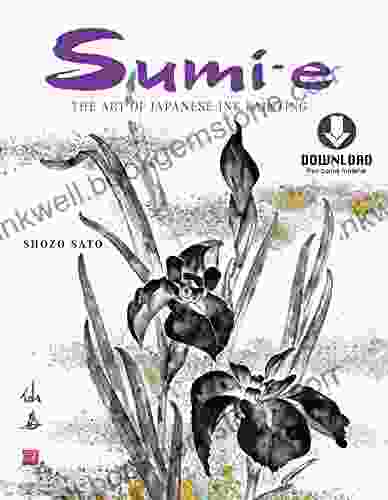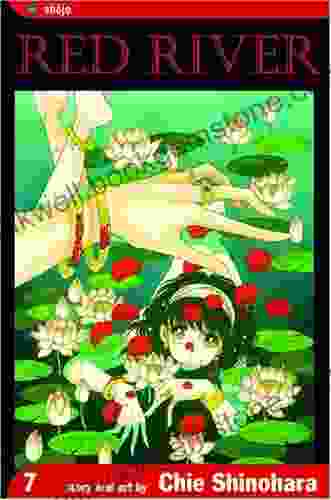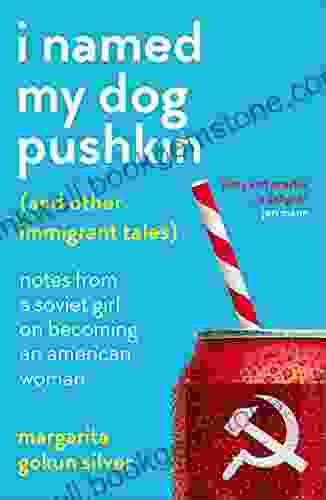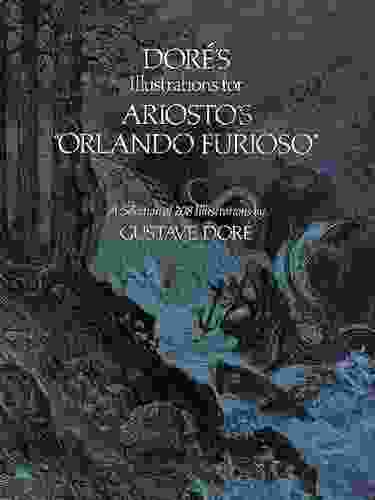The Art of Japanese Ink Painting: A Comprehensive Guide with Downloadable Material

Japanese ink painting, also known as sumi-e or suibokuga, is a traditional art form that has been practiced in Japan for centuries. It is a form of painting in which black ink is used to create images on paper or silk, and it is often characterized by its simplicity, elegance, and beauty.
Japanese ink painting has a long and rich history, and it has been used to depict a wide range of subjects, including landscapes, animals, people, and objects. The art form has been influenced by a variety of factors, including Chinese painting, Zen Buddhism, and Japanese aesthetics.
Today, Japanese ink painting is still widely practiced in Japan, and it is also becoming increasingly popular in other parts of the world. It is a beautiful and versatile art form that can be enjoyed by people of all ages and backgrounds.
4.7 out of 5
| Language | : | English |
| File size | : | 14808 KB |
| Text-to-Speech | : | Enabled |
| Screen Reader | : | Supported |
| Enhanced typesetting | : | Enabled |
| Print length | : | 192 pages |
The origins of Japanese ink painting can be traced back to China, where the art form was first developed during the Han dynasty (206 BC - 220 AD). Chinese ink painting was introduced to Japan during the Nara period (710 - 794 AD),and it quickly became popular among Japanese artists.
During the Heian period (794 - 1185 AD),Japanese ink painting began to develop its own unique style. This style was influenced by Zen Buddhism, which emphasizes simplicity, spontaneity, and the beauty of the natural world. Japanese ink painters began to use a more limited palette of colors, and they also began to focus on the use of empty space in their compositions.
By the Muromachi period (1392 - 1573 AD),Japanese ink painting had become a fully mature art form. During this period, great masters such as Sesshu Toyo (1420 - 1506) and Kano Masanobu (1434 - 1530) emerged, and they helped to establish the foundation of Japanese ink painting that is still followed today.
In the Edo period (1603 - 1868 AD),Japanese ink painting continued to flourish. This period saw the rise of the literati movement, which was a group of scholars and artists who were influenced by Chinese culture. The literati artists favored painting landscapes, and they often used ink painting to express their philosophical ideas.
Japanese ink painting is a relatively simple art form to learn, but it takes years of practice to master. The basic materials used in Japanese ink painting are ink, paper, and a brush. The ink is made from a mixture of soot and water, and it is typically used in black or brown. The paper is usually made from rice or bamboo, and it is absorbent and has a slightly textured surface. The brush is made from animal hair, and it is used to apply the ink to the paper.
There are a variety of brush techniques that can be used in Japanese ink painting. The most common technique is the dry brush technique, which is used to create light, delicate lines. The wet brush technique is used to create darker, more saturated lines. The smudging technique is used to create areas of shading and texture.
Japanese ink painters often use a limited palette of colors, and they rely on the subtle variations in the ink to create depth and interest in their compositions. The most common colors used in Japanese ink painting are black, brown, and gray. However, other colors, such as red, blue, and green, can also be used.
Japanese ink painters often use empty space in their compositions to create a sense of balance and harmony. They also use the principles of asymmetry and balance to create visually interesting works of art.
The basic materials for Japanese ink painting are ink, paper, and a brush. However, there are a number of other materials that can be used to enhance the beauty and expression of your paintings.
- Ink: The ink used in Japanese ink painting is typically made from a mixture of soot and water. The soot is obtained from burning pine or other trees. The ink is then mixed with water to create a desired consistency.
- Paper: The paper used in Japanese ink painting is usually made from rice or bamboo. The paper is absorbent and has a slightly textured surface. This surface allows the ink to flow smoothly and evenly.
- Brush: The brush used in Japanese ink painting is made from animal hair. The hairs are typically long and soft, and they come to a fine point. The brush is used to apply the ink to the paper.
- Other materials: In addition to the basic materials, there are a number of other materials that can be used to enhance the beauty and expression of your paintings. These materials include:
- Water: Water is used to dilute the ink and to create different shades of gray.
- Rice paste: Rice paste is used to create a mixture of ink and water that can be applied to the paper with a brush or sponge.
- Gold paint: Gold paint is used to add accents to paintings.
- Silver paint: Silver paint is used to add accents to paintings.
To help you learn more about Japanese ink painting, I have created a number of downloadable materials. These materials include:
- A step-by-step guide to Japanese ink painting: This guide will teach you the basic techniques of Japanese ink painting, and it will provide you with some tips and tricks for creating beautiful paintings.
- A collection of Japanese ink painting exercises: These exercises will help you practice the basic techniques of Japanese ink painting and develop your skills.
- A gallery of Japanese ink paintings: This gallery showcases a variety of Japanese ink paintings, from traditional landscapes to modern abstract works.
I hope that you find these downloadable materials helpful. They are designed to help you learn more about Japanese ink painting and to develop your skills as an artist.
Japanese ink painting is a beautiful and versatile art form that can be enjoyed by people of all ages and backgrounds. It is a relatively simple art form to learn, but it takes years of practice to master. With the right materials and instruction, you can create beautiful Japanese ink paintings that will bring you years of joy.
I encourage you to explore the art of Japanese ink painting. It is a rewarding and fulfilling art form that can help you express your creativity and connect with your inner self.
4.7 out of 5
| Language | : | English |
| File size | : | 14808 KB |
| Text-to-Speech | : | Enabled |
| Screen Reader | : | Supported |
| Enhanced typesetting | : | Enabled |
| Print length | : | 192 pages |
Do you want to contribute by writing guest posts on this blog?
Please contact us and send us a resume of previous articles that you have written.
 Best Book
Best Book Page Flip
Page Flip Bookshelf
Bookshelf Literary loom
Literary loom Chapter
Chapter Bookish
Bookish PageTurner
PageTurner Bibliophile
Bibliophile Story
Story Inkwell
Inkwell Bookworm
Bookworm Labyrinth
Labyrinth Plot Twist
Plot Twist Prose
Prose Paperback
Paperback Storyteller
Storyteller Sanctuary
Sanctuary Fiction
Fiction Reading
Reading Chronicle
Chronicle Read
Read Tina Fey
Tina Fey Maya Washington
Maya Washington Duncan M Webb
Duncan M Webb Faythe Levine
Faythe Levine Darin Martineau
Darin Martineau Edith Young
Edith Young David A Robertson
David A Robertson Patricia Telesco
Patricia Telesco Richard Huber
Richard Huber Wilfrid Jonson
Wilfrid Jonson G A Matiasz
G A Matiasz Jan Kunz
Jan Kunz Peter Carey
Peter Carey Mia Leonin
Mia Leonin Edward M Lerner
Edward M Lerner Gina S
Gina S Christopher Hart
Christopher Hart Emily Colson
Emily Colson Patti Smith
Patti Smith Eddie Armer
Eddie Armer Stu Lloyd
Stu Lloyd Jack Campbell
Jack Campbell Ruth Reichl
Ruth Reichl William Kent Krueger
William Kent Krueger Elizabeth Mowry
Elizabeth Mowry Nichole Perkins
Nichole Perkins Douglas Johnson
Douglas Johnson Josef Feller
Josef Feller Neil Lancaster
Neil Lancaster John Dickie
John Dickie Latin Travel
Latin Travel Sergey Skudaev
Sergey Skudaev Thad Carhart
Thad Carhart Peter Marren
Peter Marren Jonathan Green
Jonathan Green James Goddard
James Goddard Roberta Carter Clark
Roberta Carter Clark Emily Scherb
Emily Scherb Jacques Derrida
Jacques Derrida Henrietta Harrison
Henrietta Harrison George Kubler
George Kubler Arthur C Danto
Arthur C Danto Kensuke Okabayashi
Kensuke Okabayashi Mark Franko
Mark Franko Zongyan Hu
Zongyan Hu Moritz Fink
Moritz Fink Terry Bennett
Terry Bennett Raymond L Weil
Raymond L Weil Lewis Knight
Lewis Knight Doug Gelbert
Doug Gelbert Jeff Lenburg
Jeff Lenburg Elie Wiesel
Elie Wiesel Kareem Aal
Kareem Aal Lauren Beukes
Lauren Beukes Rosie Mercado
Rosie Mercado James Egan
James Egan Shimrit Elisar
Shimrit Elisar Pam Young
Pam Young Steve Balderson
Steve Balderson Edward Chisholm
Edward Chisholm Phil Maxey
Phil Maxey Liza Rodman
Liza Rodman John Anthony Davis
John Anthony Davis Elizabeth Alexander
Elizabeth Alexander Dessy Tsolova
Dessy Tsolova Halka Chronic
Halka Chronic Paris Permenter
Paris Permenter J R Ward
J R Ward Taylor Dibbert
Taylor Dibbert Paul J Foster
Paul J Foster Geniuz Gamer
Geniuz Gamer Joe Holt
Joe Holt John Michael Rivera
John Michael Rivera Jared Blando
Jared Blando Lucy Coleman
Lucy Coleman Jody Houton
Jody Houton Eva Marie Magill Oliver
Eva Marie Magill Oliver Nicholas Wapshott
Nicholas Wapshott William Silvester
William Silvester Richard Tabor Greene
Richard Tabor Greene Ellen Besen
Ellen Besen Lynne M Thomas
Lynne M Thomas Ferrett Steinmetz
Ferrett Steinmetz Joi Barrios
Joi Barrios Megan K Stack
Megan K Stack E John B Allen
E John B Allen Hillary Kerr
Hillary Kerr Ellen Eagle
Ellen Eagle Lexie Winston
Lexie Winston Mike Yoshiaki Daikubara
Mike Yoshiaki Daikubara Peter Lord
Peter Lord Rilzy Adams
Rilzy Adams Olga Lengyel
Olga Lengyel Jim Green
Jim Green Luca Turin
Luca Turin Christine A Collins
Christine A Collins John Brunner
John Brunner George Catlin
George Catlin Sarah Nisbett
Sarah Nisbett Richard Tongue
Richard Tongue Julian Armfield
Julian Armfield Robert Bree
Robert Bree Luigi Amara
Luigi Amara Lynne Pickering
Lynne Pickering Robert D Armstrong
Robert D Armstrong John Dominic Crossan
John Dominic Crossan W R Tymms
W R Tymms Naglaa Ghali
Naglaa Ghali Nai
Nai Ashleynicole
Ashleynicole Emily Haynes
Emily Haynes Michael Mcbride
Michael Mcbride Kurt Meissner
Kurt Meissner Dustin Graham
Dustin Graham Thomas Crow
Thomas Crow Scott Olsen
Scott Olsen Martha Bayne
Martha Bayne Greg Simonds
Greg Simonds Sanyika Shakur
Sanyika Shakur Luke Zimmermann
Luke Zimmermann Michael R Fletcher
Michael R Fletcher Loretta Outwater Cox
Loretta Outwater Cox Emma Baxter Wright
Emma Baxter Wright Michel Prince
Michel Prince Joanne Fink
Joanne Fink Diana Somerville
Diana Somerville Rosemary Mahoney
Rosemary Mahoney Mark Stattelman
Mark Stattelman Wes Moore
Wes Moore Edward Sylvester Ellis
Edward Sylvester Ellis Elizabeth Faidley
Elizabeth Faidley Francesco Lo Iacono
Francesco Lo Iacono Diane Seuss
Diane Seuss Nina Garcia
Nina Garcia Jason Caldwell
Jason Caldwell Patrick Syme
Patrick Syme Marvin Kalb
Marvin Kalb Rylee Tipton
Rylee Tipton Stanley Vestal
Stanley Vestal Matteo Cossu
Matteo Cossu Diane Wilson
Diane Wilson Christopher Johns
Christopher Johns Tarana Burke
Tarana Burke Shaunna Russell
Shaunna Russell Roger Scruton
Roger Scruton Dori Griffin
Dori Griffin Elizabeth Kincaid
Elizabeth Kincaid Emily Byrne Curtis
Emily Byrne Curtis Noah Galloway
Noah Galloway Keeyla Meadows
Keeyla Meadows Glenn Rudin
Glenn Rudin Kurt Vonnegut
Kurt Vonnegut Sylvia Kristel
Sylvia Kristel William Blake
William Blake Helene Cixous
Helene Cixous Miss Jazzie
Miss Jazzie Emiliano Zapata
Emiliano Zapata Tjio Kayloe
Tjio Kayloe Sei Shonagon
Sei Shonagon Hugh Iwanicki
Hugh Iwanicki Duncan Barrett
Duncan Barrett Simon Gervais
Simon Gervais Edward Struzik
Edward Struzik Edwidge Danticat
Edwidge Danticat Joey Korenman
Joey Korenman Daniel Verastiqui
Daniel Verastiqui Alberto Manguel
Alberto Manguel Kellye Garrett
Kellye Garrett Elizabeth Bear
Elizabeth Bear R S Penney
R S Penney Insight Guides
Insight Guides Laura Vae Gatz
Laura Vae Gatz Jesse Storm
Jesse Storm Jennifer Clement
Jennifer Clement Valerie Boyd
Valerie Boyd Robert Ullian
Robert Ullian Jackie Simmonds
Jackie Simmonds Mala Kacenberg
Mala Kacenberg Roger Kahn
Roger Kahn Joe Greer
Joe Greer Iceberg Slim
Iceberg Slim Anthony J Melchiorri
Anthony J Melchiorri Francis Hopkinson Smith
Francis Hopkinson Smith Jamie Eubanks
Jamie Eubanks Edward Branigan
Edward Branigan Imbolo Mbue
Imbolo Mbue Dima Zales
Dima Zales Emma Block
Emma Block Sarah Pinsker
Sarah Pinsker Riad Sattouf
Riad Sattouf John Matthews
John Matthews Victoria Shearer
Victoria Shearer Elena Tchernichova
Elena Tchernichova Jamie K Schmidt
Jamie K Schmidt Marina Bakasova
Marina Bakasova Maria Hinojosa
Maria Hinojosa Doris Lessing
Doris Lessing David Bergsland
David Bergsland Gustave Dore
Gustave Dore Marcel Liebman
Marcel Liebman Joy Deja King
Joy Deja King Wanda M Morris
Wanda M Morris Robert N Charrette
Robert N Charrette Robert M Utley
Robert M Utley E E Smith
E E Smith Mika Tufuga Valai
Mika Tufuga Valai Harry Harrison
Harry Harrison Eric Rickstad
Eric Rickstad Richard Fortey
Richard Fortey Lewis Hector Garrard
Lewis Hector Garrard Edwin Harkness Spina
Edwin Harkness Spina Phil Kelly
Phil Kelly Emma Gift
Emma Gift Tessa Bailey
Tessa Bailey Michael Eric Dyson
Michael Eric Dyson C M Carney
C M Carney Robert E Howard
Robert E Howard Benjamin R Jordan
Benjamin R Jordan Michael Lakin
Michael Lakin Ruth Wilshaw
Ruth Wilshaw Rebecca Fraser
Rebecca Fraser Toby Neal
Toby Neal Michael Dante Dimartino
Michael Dante Dimartino Elle Wright
Elle Wright Tilar J Mazzeo
Tilar J Mazzeo Dr Cecil H H Mills
Dr Cecil H H Mills Jeanne St James
Jeanne St James Vera Nazarian
Vera Nazarian Maria Arango Diener
Maria Arango Diener Helen Keller
Helen Keller Edgar Allan Poe
Edgar Allan Poe Edward Willett
Edward Willett Tim Travis
Tim Travis Joseph Toone
Joseph Toone Rohan M Vider
Rohan M Vider Lindsey Pogue
Lindsey Pogue Tulku Thondup
Tulku Thondup Michael Marshall Smith
Michael Marshall Smith Insight Traveller
Insight Traveller Ladoris Hazzard Cordell
Ladoris Hazzard Cordell S J Pajonas
S J Pajonas John Brewer
John Brewer Malcolm X
Malcolm X Dr Leo Henry Wildeman
Dr Leo Henry Wildeman Mark Cooper
Mark Cooper Louis Blanc
Louis Blanc Graham Webb
Graham Webb Tessa Hadley
Tessa Hadley Daniel Ankele
Daniel Ankele Kassanna
Kassanna Jupiter Kids
Jupiter Kids Jason Tselentis
Jason Tselentis Reed Farrel Coleman
Reed Farrel Coleman Language Learning University
Language Learning University Elise Mahan
Elise Mahan Harry Whitewolf
Harry Whitewolf Brett Tate
Brett Tate Elaine Bertolotti
Elaine Bertolotti Ralph Cotton
Ralph Cotton Rebecca Solnit
Rebecca Solnit Kristen Dutkiewicz
Kristen Dutkiewicz Edwin George Lutz
Edwin George Lutz Elizabeth Miki Brina
Elizabeth Miki Brina Ruth Leaf
Ruth Leaf Gene Perret
Gene Perret Paul Noble
Paul Noble Michelle Lawson
Michelle Lawson Michael Ferber
Michael Ferber Peter Spiegelman
Peter Spiegelman Matt Fox
Matt Fox Karen Redrobe Beckman
Karen Redrobe Beckman Rosecrans Baldwin
Rosecrans Baldwin Dervla Murphy
Dervla Murphy Thomas Shor
Thomas Shor Rachel Aaron
Rachel Aaron Elizabeth Brundage
Elizabeth Brundage Eric Thomas
Eric Thomas Jacob Burckhardt
Jacob Burckhardt Madeleine Orban Szontagh
Madeleine Orban Szontagh Karen Karon
Karen Karon Rose Art
Rose Art John Sandford
John Sandford Sloan De Forest
Sloan De Forest Jasmine Guillory
Jasmine Guillory Stephanie Elizondo Griest
Stephanie Elizondo Griest Douglas Segal
Douglas Segal Ryan Kane
Ryan Kane Izzy Paskowitz
Izzy Paskowitz Phyllis Klotz
Phyllis Klotz Johannes Zang
Johannes Zang Michael Showalter
Michael Showalter Wendy E Simmons
Wendy E Simmons Jm Guillen
Jm Guillen Drmw
Drmw Jennifer Frick Ruppert
Jennifer Frick Ruppert Linda Riesenberg Fisler
Linda Riesenberg Fisler John F Harnish
John F Harnish Jill Culiner
Jill Culiner Neil Baldwin
Neil Baldwin Ronald Malfi
Ronald Malfi Matthew Farrer
Matthew Farrer Modris Eksteins
Modris Eksteins David A Price
David A Price Gananath Obeyesekere
Gananath Obeyesekere Marc Steinberg
Marc Steinberg Whitney Chadwick
Whitney Chadwick Edward Burns
Edward Burns Pedro Martinez
Pedro Martinez Scott Eyman
Scott Eyman Violet Kupersmith
Violet Kupersmith Lisa Rose Wright
Lisa Rose Wright Michael Arndt
Michael Arndt Tracy Brown
Tracy Brown James Joseph
James Joseph Karen Kluglein
Karen Kluglein Dermot Mcevoy
Dermot Mcevoy Bil Donovan
Bil Donovan Jennie Smallenbroek
Jennie Smallenbroek Nan Sanders Pokerwinski
Nan Sanders Pokerwinski Gregory Curtis
Gregory Curtis Jana Marcus
Jana Marcus Dorothy Dent
Dorothy Dent Sari Botton
Sari Botton Susanna Kaysen
Susanna Kaysen Pm Johnson
Pm Johnson Eloisa James
Eloisa James Nancy Reyner
Nancy Reyner Donna Everhart
Donna Everhart Rick Partlow
Rick Partlow Eat Like A Local
Eat Like A Local Jasper Rees
Jasper Rees Sam Baldwin
Sam Baldwin Kim Brown Seely
Kim Brown Seely Clarence King
Clarence King Emily Craft By Maker Academy
Emily Craft By Maker Academy Geoff Kersey
Geoff Kersey Brian Dougherty
Brian Dougherty Tanya Talaga
Tanya Talaga Devin Harbison
Devin Harbison T M Haviland
T M Haviland Joy Harjo
Joy Harjo Gary K Wolf
Gary K Wolf John G Neihardt
John G Neihardt Desmond King
Desmond King Daniel Gross
Daniel Gross Ellen Winner
Ellen Winner Hannah Dale
Hannah Dale Yoshitomo Ikawa
Yoshitomo Ikawa Megan Hess
Megan Hess Kevin Kwan
Kevin Kwan Uncle Brazil
Uncle Brazil Luana Luconi Winner
Luana Luconi Winner Sara Boccaccini Meadows
Sara Boccaccini Meadows Elizabeth Stansberry
Elizabeth Stansberry Ed Sikov
Ed Sikov Kale James
Kale James Devon C Ford
Devon C Ford Lady Dia
Lady Dia Dorothy Grant
Dorothy Grant Elaine A Powers
Elaine A Powers Diane Greenberg
Diane Greenberg Jean Pierre Isbouts
Jean Pierre Isbouts Nicholas Turner
Nicholas Turner Maurice White
Maurice White Victoria Christopher Murray
Victoria Christopher Murray Nathan Hystad
Nathan Hystad E M Hardy
E M Hardy Charles Dellheim
Charles Dellheim Jenni Basch
Jenni Basch Rick Furphy
Rick Furphy Meb Keflezighi
Meb Keflezighi Julie Kavanagh
Julie Kavanagh Susan Elizabeth Jones
Susan Elizabeth Jones Sean D Young
Sean D Young David Archer
David Archer Edvard Munch
Edvard Munch Ralph Kern
Ralph Kern Dk Eyewitness
Dk Eyewitness Maria Nolasco
Maria Nolasco Elijah Nicholas Wilson
Elijah Nicholas Wilson Janet Lynn Cano
Janet Lynn Cano Dick Jackson
Dick Jackson Didier Ghez
Didier Ghez Don Peri
Don Peri Vasily Mahanenko
Vasily Mahanenko Tom Shone
Tom Shone Eddy De Wind
Eddy De Wind Octavia Hyde
Octavia Hyde Elizabeth L Eisenstein
Elizabeth L Eisenstein Ina Saltz
Ina Saltz James R Lilley
James R Lilley Margarita Gokun Silver
Margarita Gokun Silver Langston Hughes
Langston Hughes Manifestation Publishing House
Manifestation Publishing House Spike Bucklow
Spike Bucklow Jane Evans
Jane Evans Jean Muenchrath
Jean Muenchrath Pablo Hidalgo
Pablo Hidalgo Jonathan Yanez
Jonathan Yanez Jeff Long
Jeff Long Frank Right
Frank Right Tess Burrows
Tess Burrows E E Knight
E E Knight Kristal Wick
Kristal Wick Elena Gorokhova
Elena Gorokhova Kate Lock
Kate Lock Wing Over
Wing Over Dylan Birtolo
Dylan Birtolo Eric Gill
Eric Gill Randy Wayne White
Randy Wayne White Emma Svensson
Emma Svensson Paul Cornell
Paul Cornell Patrick Youngblood
Patrick Youngblood Bruce Cook
Bruce Cook E B Dawson
E B Dawson Jean Le Pautre
Jean Le Pautre Donald Hamilton
Donald Hamilton Eliza Ruhamah Scidmore
Eliza Ruhamah Scidmore Stephen Clarke
Stephen Clarke Kate Betts
Kate Betts Sebastien De Castell
Sebastien De Castell Gabriella Contestabile
Gabriella Contestabile L L Richman
L L Richman Mary Wellesley
Mary Wellesley Jonathan Smidt
Jonathan Smidt Tom Ryan
Tom Ryan Loki Renard
Loki Renard Edmund S Wong
Edmund S Wong Thomas Booth
Thomas Booth Elizabeth Wenk
Elizabeth Wenk G Eric Francis
G Eric Francis Hernan Diaz
Hernan Diaz El Greco
El Greco Paul Doyle
Paul Doyle Edgar A Whitney
Edgar A Whitney Eduardo Navas
Eduardo Navas Regis Yaworski
Regis Yaworski Mindy Mejia
Mindy Mejia Dom Joly
Dom Joly Leslie Buck
Leslie Buck Radim Malinic
Radim Malinic Scott Kloos
Scott Kloos Kate Stevens
Kate Stevens Zachary Fenell
Zachary Fenell Yehuda Koren
Yehuda Koren Eliot Peper
Eliot Peper Dominick Dunne
Dominick Dunne C Pierce Salguero
C Pierce Salguero Jim Krause
Jim Krause Ed Hooks
Ed Hooks Hadley Freeman
Hadley Freeman Steven M Barrett
Steven M Barrett Dick Durham
Dick Durham El Griffin
El Griffin James W Stanfield Jr
James W Stanfield Jr Vladimir Alexandrov
Vladimir Alexandrov Logan Jacobs
Logan Jacobs Janet Wood
Janet Wood Edward Victor
Edward Victor Victoria Lewis
Victoria Lewis Tahir Shah
Tahir Shah Gavin Strange
Gavin Strange Phuc Tran
Phuc Tran Giuseppe Cristiano
Giuseppe Cristiano Gabriela Jauregui
Gabriela Jauregui Elizabeth Size
Elizabeth Size Jeff Pearlman
Jeff Pearlman Jessica Hische
Jessica Hische Mark Twain
Mark Twain Lea Rawls
Lea Rawls Mary Jane Jacob
Mary Jane Jacob Ben Swanepoel
Ben Swanepoel Peter Cristofono
Peter Cristofono Elizabeth Bonesteel
Elizabeth Bonesteel Robert E Kapsis
Robert E Kapsis Nella Larsen
Nella Larsen Diana O Gilvie
Diana O Gilvie S R Witt
S R Witt William Dalrymple
William Dalrymple Paul E Cooley
Paul E Cooley Emerson Hough
Emerson Hough Ellisa Bender
Ellisa Bender Emily Hahn
Emily Hahn Zarifa Ghafari
Zarifa Ghafari Peter F Drucker
Peter F Drucker Emil Draitser
Emil Draitser Jackie Barrass
Jackie Barrass Grace Hamilton
Grace Hamilton Yuri Leving
Yuri Leving James Dickey
James Dickey Jonathan Coe
Jonathan Coe Booker T Washington
Booker T Washington Neil Bennion
Neil Bennion Dennis Banks
Dennis Banks Arthur C Clarke
Arthur C Clarke James A Michener
James A Michener Judy Botello
Judy Botello Wendy Lesser
Wendy Lesser Diane Keaton
Diane Keaton Mulk Raj Anand
Mulk Raj Anand Jonathan Sacks
Jonathan Sacks Janet Wilcox
Janet Wilcox Michael R Pitts
Michael R Pitts Matt Johnston
Matt Johnston L X Beckett
L X Beckett Kiese Laymon
Kiese Laymon Elin Hilderbrand
Elin Hilderbrand Ebony Roberts
Ebony Roberts Karen Campbell
Karen Campbell Kelley Swain
Kelley Swain Mark Farnsworth
Mark Farnsworth Greg Manning
Greg Manning Douglas Phillips
Douglas Phillips Robyne Leblanc
Robyne Leblanc Emily Carr
Emily Carr Eduardo Galeano
Eduardo Galeano Tiffany Dufu
Tiffany Dufu Prakruti Prativadi
Prakruti Prativadi Larry Mcmurtry
Larry Mcmurtry Diane Kochilas
Diane Kochilas Sarah Turnbull
Sarah Turnbull Elizabeth Kendall
Elizabeth Kendall Roark Bradford
Roark Bradford Kelly Speck
Kelly Speck Rachel Mclean
Rachel Mclean Jesse Mccarthy
Jesse Mccarthy Mint Editions
Mint Editions T C Edge
T C Edge Ellen Grady
Ellen Grady Grigori Grabovoi
Grigori Grabovoi Jian Ping
Jian Ping Edward Brody
Edward Brody John S C Abbott
John S C Abbott Jade Royal
Jade Royal Eli Brook
Eli Brook Orson Scott Card
Orson Scott Card Gabriel Miller
Gabriel Miller Dianne Pineda Kim
Dianne Pineda Kim Paper Monument
Paper Monument Bruno Munari
Bruno Munari Michael R Jacobs
Michael R Jacobs James A Moore
James A Moore Dennis E Taylor
Dennis E Taylor Laurence Maslon
Laurence Maslon S Rob
S Rob Maggie Nelson
Maggie Nelson Jane Maday
Jane Maday Diana Marcum
Diana Marcum Laura A Macaluso
Laura A Macaluso Jeff Farr
Jeff Farr Kevin Brownlow
Kevin Brownlow Jean Luc Nancy
Jean Luc Nancy Nicholas Woodsworth
Nicholas Woodsworth Chris Legaspi
Chris Legaspi Elizabeth Becker
Elizabeth Becker Debra Kayn
Debra Kayn Kyle West
Kyle West Tom Cole
Tom Cole William V Dunning
William V Dunning Rachel Polonsky
Rachel Polonsky Ellen Murkison
Ellen Murkison E M Forster
E M Forster Nick Hunt
Nick Hunt Sarah Lentz
Sarah Lentz L D Goffigan
L D Goffigan Rory Moulton
Rory Moulton Joel Enos
Joel Enos Jamie James
Jamie James Max Fatouretchi
Max Fatouretchi Nicholas Gill
Nicholas Gill Richard Detrich
Richard Detrich Wensley Clarkson
Wensley Clarkson Sylvia Foster
Sylvia Foster Roz Marshall
Roz Marshall Arlo Adams
Arlo Adams Robyn Neild
Robyn Neild William Silvers
William Silvers Dr Harpal Sodhi
Dr Harpal Sodhi Eric Pyle
Eric Pyle Skywatcher Press
Skywatcher Press Lisa Kleypas
Lisa Kleypas Richard Goodman
Richard Goodman Ethan Casey
Ethan Casey Derek Murphy
Derek Murphy Isidra Mencos
Isidra Mencos
Light bulbAdvertise smarter! Our strategic ad space ensures maximum exposure. Reserve your spot today!

 George Bernard ShawMark Twain's Extraordinary Middle Eastern Sojourn: A Comprehensive Literary...
George Bernard ShawMark Twain's Extraordinary Middle Eastern Sojourn: A Comprehensive Literary... Rob FosterFollow ·8k
Rob FosterFollow ·8k Greg FosterFollow ·16.1k
Greg FosterFollow ·16.1k Gilbert CoxFollow ·14.5k
Gilbert CoxFollow ·14.5k Ian McEwanFollow ·5.4k
Ian McEwanFollow ·5.4k Cristian CoxFollow ·6.1k
Cristian CoxFollow ·6.1k Darius CoxFollow ·17.9k
Darius CoxFollow ·17.9k Vincent MitchellFollow ·2.5k
Vincent MitchellFollow ·2.5k Bryan GrayFollow ·2.3k
Bryan GrayFollow ·2.3k

 Dennis Hayes
Dennis HayesMatilda Plantagenet and Her Sisters: Gender and Power in...
The lives of Matilda Plantagenet and her...

 Carl Walker
Carl WalkerA Comprehensive Guide to Defining Yourself or Your...
In today's competitive world, it's...

 Eliot Foster
Eliot FosterThe Civilization of the Renaissance in Italy: Classics,...
The Renaissance was a period of great cultural...
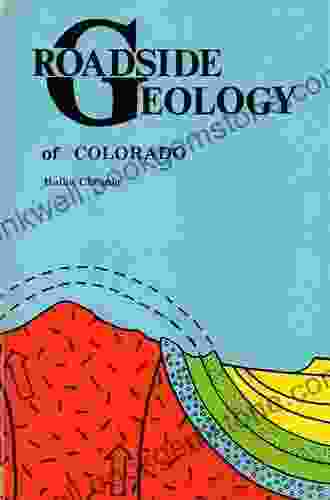
 Floyd Richardson
Floyd RichardsonUnveiling the Roadside Geology of Colorado: A Halka...
Colorado, a state renowned for its...
4.7 out of 5
| Language | : | English |
| File size | : | 14808 KB |
| Text-to-Speech | : | Enabled |
| Screen Reader | : | Supported |
| Enhanced typesetting | : | Enabled |
| Print length | : | 192 pages |


